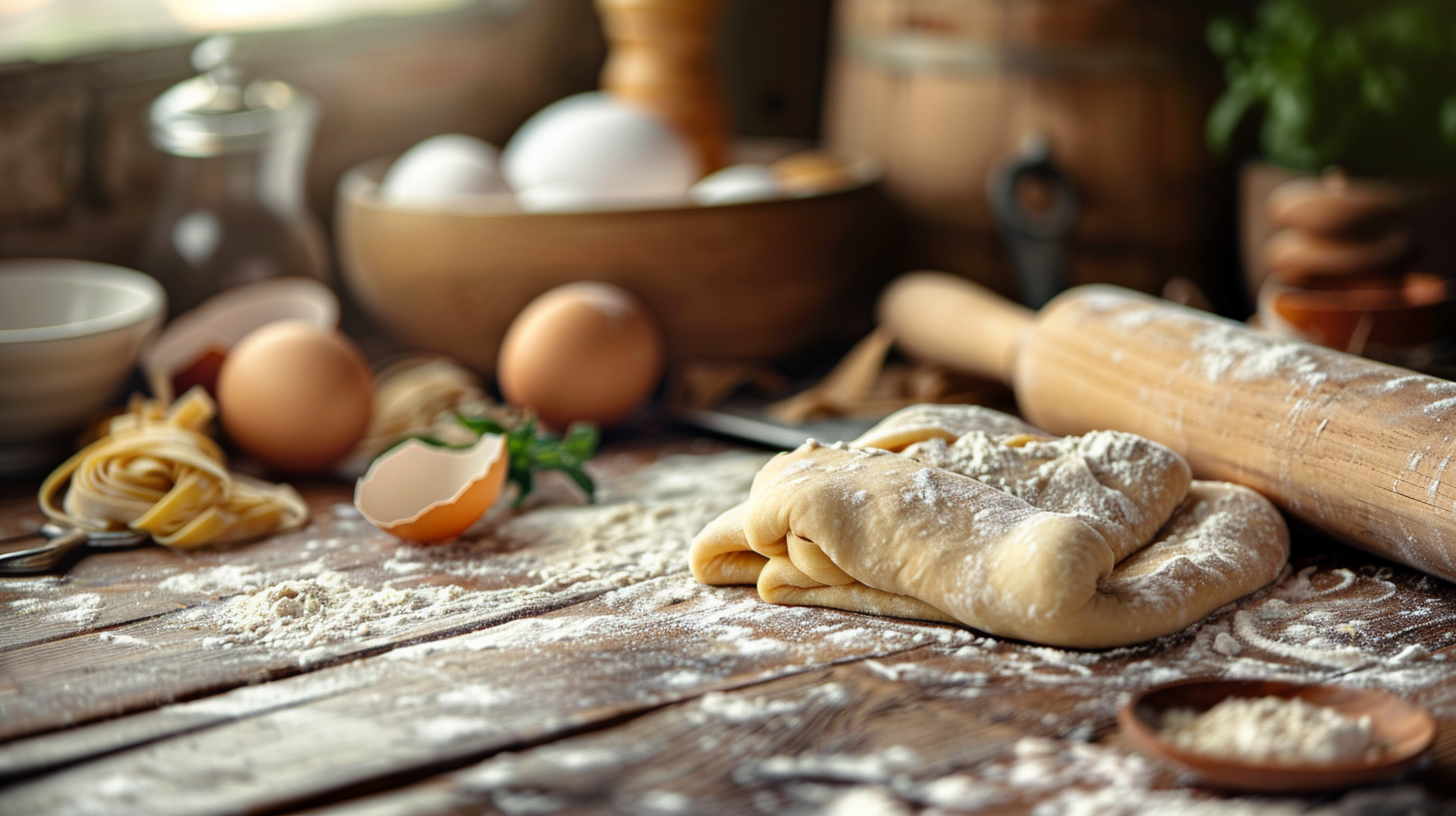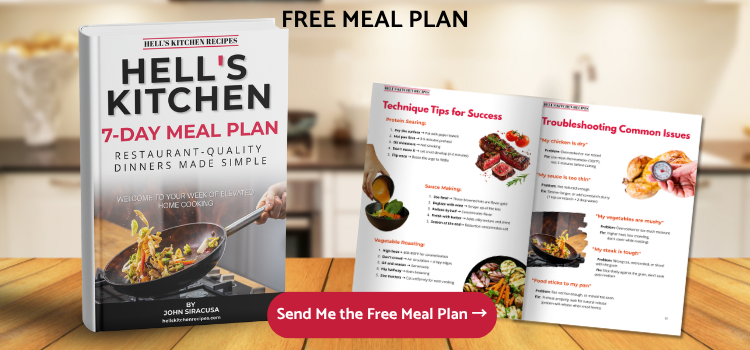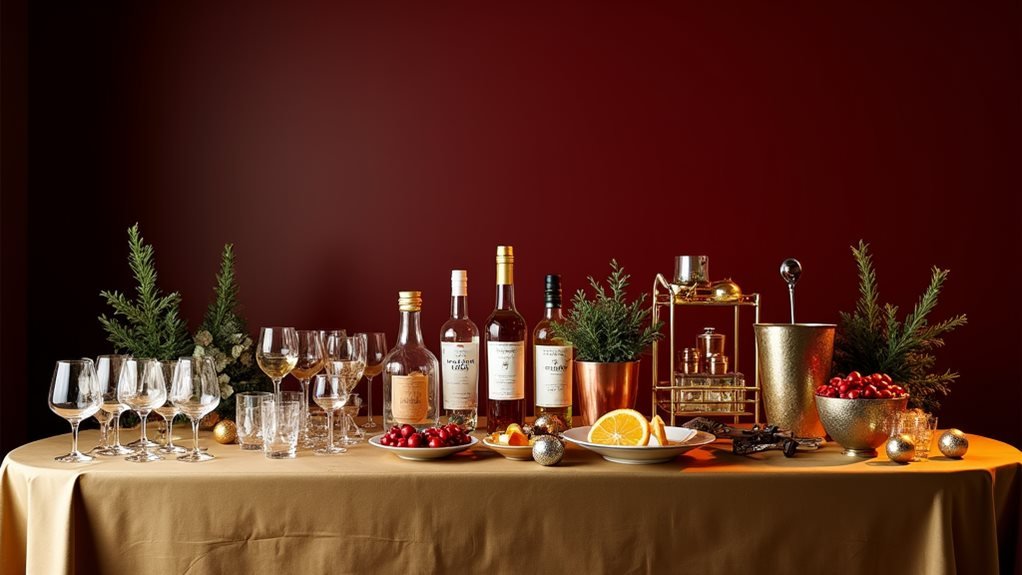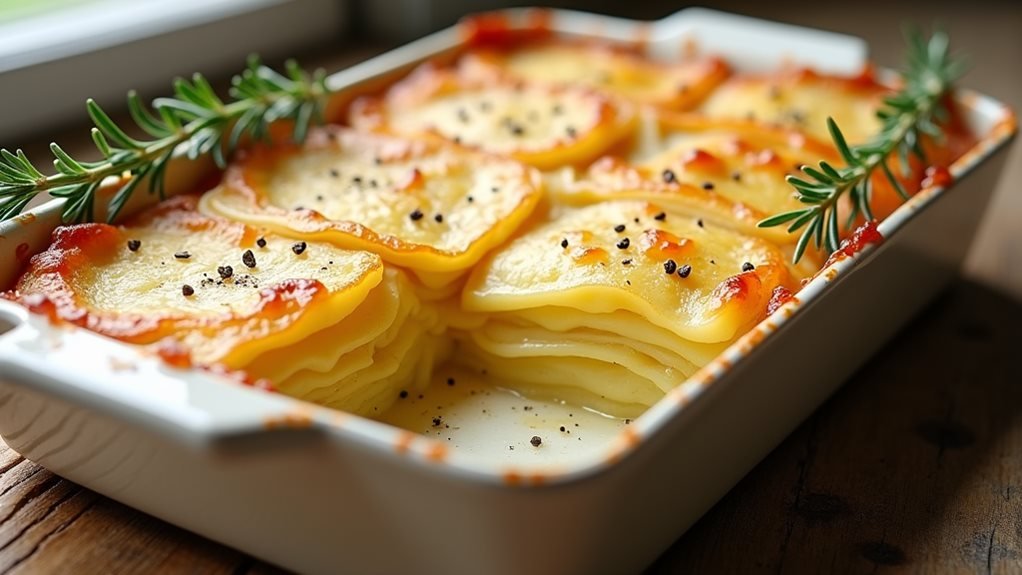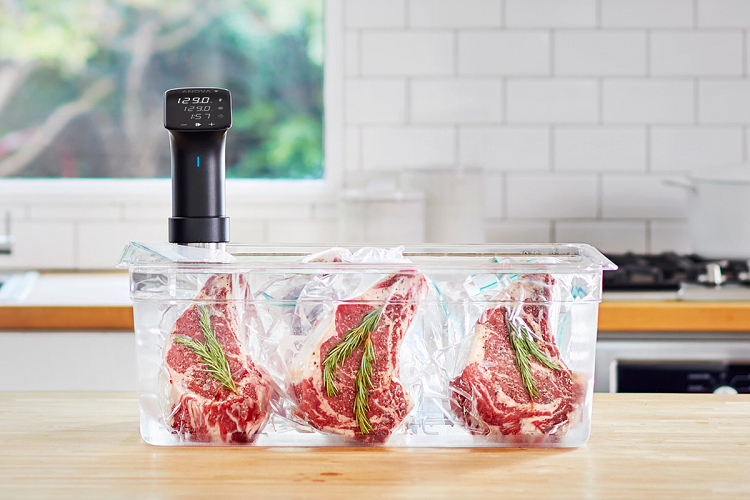
The kitchen is not resistant to change; it’s quite the opposite. There’s always some new kitchen gadget, appliance, or tool designed to make cooking easier. Lately, Sous Vide Cooking is the newest culinary trend that has been growing in home kitchens. At first, I wasn’t quite sure what sous vide cooking was, so I tried it and now love it! So, What is Sous Vide cooking?
It’s a French term for “under vacuum,” a vacuum-sealing food technique in a bag that utilizes a precise temperature control circulated water bath that cooks food to an exact temperature.
Sous vide cooking produces results that are unachievable with any other cooking method. Making gourmet restaurant-quality dishes does not have to be tricky; it’s considerably easier than you may think. Simplify sous vide cooking by following the steps tips below.
How to Sous Vide In 3 Easy Steps
- Tightly secure the precision cooker to a tub of water and adjust the time and the temperature according to your desired level or recipe needs.
- Place vacuum-sealed food clipped to the side of the pot.
- Finish browning by pan-searing, outdoor grill, or oven broil to your crispy, golden exterior you desire.
Buy: Anova Culinary Sous Vide Precision Cooker, at Amazon
Gordon Ramsay Guide Sous Vide Cooking ?
If you want a juicy medium-rare Ribeye Steak steak, the water temperature will be around 129°F. Sous vide machines are precise and control the temperature very well, holding it at 129°F for the entire cooking time. Continue reading to learn more about Sous vide cooking.
The basic premise of most cooking, whether using an oven, stovetop, or grill, is that the heat is usually much higher than the meat’s target internal temperature. Think about cooking a steak on the grill. The grill is heated up, and the lid is shut to get that grill extremely hot. Normally, grills get up to 500°F+, which is remarkably high heat and excellent for making that nice sear on a steak.
The steak is placed on the grill, and due to the high temperature, it won’t take long to cook the steak. For a rare steak, you will want to cook it until the internal temperature is about 130°F. Because the grill is much hotter than that, you need to watch the steak and time to remove the meat from the grill.
Forgetting it on the grill too long will overcook the meat. If the meat stayed on the grill, it would ultimately reach the grill’s exact temperature and form a texture something like leather. Sous vide, though, uses a totally different approach.
When the vacuum-sealed meat is lowered into sous vide water bath, the water temperature is identical to the meat’s target temperature. Consequently, if you want a juicy rare ribeye, the water temperature will be around 129°F.
Sous vide machines are precise and control the temperature very well, holding it at 129°F for the entire cooking time. While the meat will certainly take longer to come to the target internal temperature of 129°F because the heat around it is much lower than that of the grill, it will not overcook once it reaches the target temperature.
While it seems crazy, this is totally true. A steak can be fully cooked and reach 129°F in 1 hour, but it can stay in the water bath for many more hours and not overcook. Rather, it will be held at that medium-rare doneness the whole time. When ready, pull the bag from the water bath and remove the steak.
Buy: Anova Culinary Sous Vide Precision Cooker, at Amazon
Essential Equipment
To start a sous viding, you need to have some special equipment. Below are the essentials. I believe the Anova Precision sous vide Cooker Nano is the finest immersion circulator in its class for home chefs. It is one of the smallest, most reasonably priced models from a manufacturer that has every time made some of the best-performing sous vide cookers I’ve ever used. And its exact temperature controller and rapid heating are equal with that of considerably more cheap sous vide machines.
Anova’s Bluetooth connection lets you control the cooker settings from your own phone. You can use Anova’s phone app to program the time, and the temperature from specific recipes onto the sous vide circulator. The circulator does have a control panel on the face as well, so you don’t necessarily have to program from your phone if you prefer not to.
The Anova sous vide circulator is precise enough for the most demanding of cooking methods. This is essential since even slight differences can hinder your effort at flawlessly cooked eggs with soft yolks with the whites set to firm.
Sous Vide Circulator
Over the course of my life, I have used seven different sous vide circulators. Newer machines are sleeker, smarter, and cheaper, which means you may be able to find a good deal on sous vide circulator. The good news is that you can prepare all sorts of things with them, including eggs, salmon, flank steak, pork loin, and beef short ribs.
Container used with Sous Vide Cooking
Many different containers can be used to sous vide. Some examples are dutch ovens, large stock pots, a large saucepan, or a large plastic container. If you are looking to cook large amounts of meat, I recommend investing in a 12-qt container like the Cambro containers. They are inexpensive and easy-to-use.
Zipper-lock bags
Traditionally, people would buy vacuum sealers and vacuum bags to do their sous vide. However, they are not necessary, and if you are just starting or doing smaller cuts of meat, a waste of money. Zipper-lock freezer bags are perfect for users and are cost-effective.
You will need to use a higher-quality freezer bag that does not contain BPA. BPA is harmful, and you do not want that to end up in your food; usually, recipes will call for a gallon-sized zipper bag.
Buy: Anova Culinary Sous Vide Precision Cooker, at Amazon
Directions to Getting Started with Sous Vide Cooking
Set-up the Sous Vide Circulator
Attach the circulator to your heat-safe container and fill it with water roughly to about an inch over the minimum volume required line. You do want to check your recipe to make sure you are using the correct amount of water.
Pre-set Water to Desired Temperature
You want to let your bath heat up to the correct temperature before use. This usually takes about 20 – 30 mins, but if you want to speed up the process, cover the bath with plastic wrap.
Season your Food and Place in Plastic Bag
Follow the recipe and season your food accordingly. Place your food and any aromatics that the recipe calls for into the zipper-seal bag. As a recommendation, I would add a bit of olive or vegetable oil into the bag if you are cooking fish or meat.
The pieces should be cut to be equal sizes, and everything should be placed so that it all lays flat. Once everything is in the bag, press out as much air as possible and seal the bag.
Submerge the Bag
Once the bath reaches the correct temperature, you want to put the bag into the bath. This next step is critical for success so take note. Allow all the remaining air bubbles in the bag to ascend to the top of the bag. Air is a poor conductor of heat, and if you don’t get it out, your food won’t cook properly.
Once all the air bubbles are at the top, open a small corner of the bag to allow for that air to leave the bag. Reseal the bag.
Clip Bag to Container
Clip the bag to the container so it stays put and covers it with plastic wrap. If you have sous vide container lid, use that to cover the food. Cook for the appropriate time
Once Food Finish Cooking
Remove the food from the bath, and if needed, give any meat a quick sear if a crispy crust is desired. You want to do this as quickly as possible to prevent raising the meat’s temperature before serving. Dry the meat first and use high heat to sear quickly.
Saving Food for Later
If you plan on saving the food for later, it is important to chill the food before storing it rapidly.
The best way to do this is to plunge the still-sealed bag into a large ice bath. This stops the cooking. You want to let that sit in the ice until the food is completely chilled. Then place it into the refrigerator until needed.
Frequently Asked Questions:
Is there any way to sous vide if I don’t have a sous vide circulator?
The best thing about sous vide is the cook’s precision and the hands-off easy-to-use aspects; If you don’t have the circulator, you will not have the same experience.
There is a way to do it without, but you will have to pay more attention to what you are doing. The best “hack” if you do not have a circulator is to fill a large pot of water and heat on the stovetop with a thermometer.
You will have to carefully monitor to ensure that it stays at the correct temperature and all accuracy is almost lost. Honestly, if you want to sous vide, you need to invest in a circulator.
Do I need to buy a vacuum sealer?
No. They’re helpful, but not necessary. A BPA-free high-quality zipper-sealed bag will work perfectly.
How do I remove air bubbles when using a ziplock bag?
Note: Follow our air-displacement method to remove the air bubbles.
Clip the bag to the container with just a binder clip to allow the air bubbles to rise to the top. This allows for the hot water to have better contact with the food.
Remove the last air bubbles by opening one corner of the bag and allow any remaining air to release. Reseal the bag once the air is gone. To ensure that there are no cold spots on the food, make sure the bag is not touching the machine, cooking vessel, or using multiple bags or any other zipper-sealed bags.
Why do I need to cover my pot when I’m cooking sous vide?
Covering with plastic wrap does two things. It prevents water from evaporating from the bath, and two allow for the water to quickly come back to temperature after inserting food into the bath. This is very important when cooking delicate foods like soft-poached eggs.
How do I know how much is the right amount of water in my bath?
You need enough water to submerge the food into the water completely and have enough room left over for the dispersed water to go after putting the food in the bath. A large roast will disperse more water than smaller items. A sous vide device will have a minimum line or an error message if the water is too low.
What if my plastic bag begins to float… What’s a good way to weigh it down?
Here are a few of my favorite methods:
- Clip a large binder clip to the bottom of the bag and place a heavy spoon into the mouth of the clip. This will add weight to the bottom of the bag so that it sinks. Suppose the recipe calls for double bagging. Place two heavy spoons into the outer bag.
- Another method is to fill a mason jar or zipper-lock plastic bags with pie weights and place them on top of the floating bag.
- One last method is to place an inverted steamer basket on top of the floating bag. Then put additional weights, like heavy spoons or pie weights, on top of the basket.
Sous vide can seem intimidating for someone who has never attempted it before, but you will have no trouble with this cooking method if you follow the above guide. Like anything, practice makes perfect, so if the first time it doesn’t come out as planned, try again. Over time, you will become a pro at sous vide and be able to impress your family and friends.

